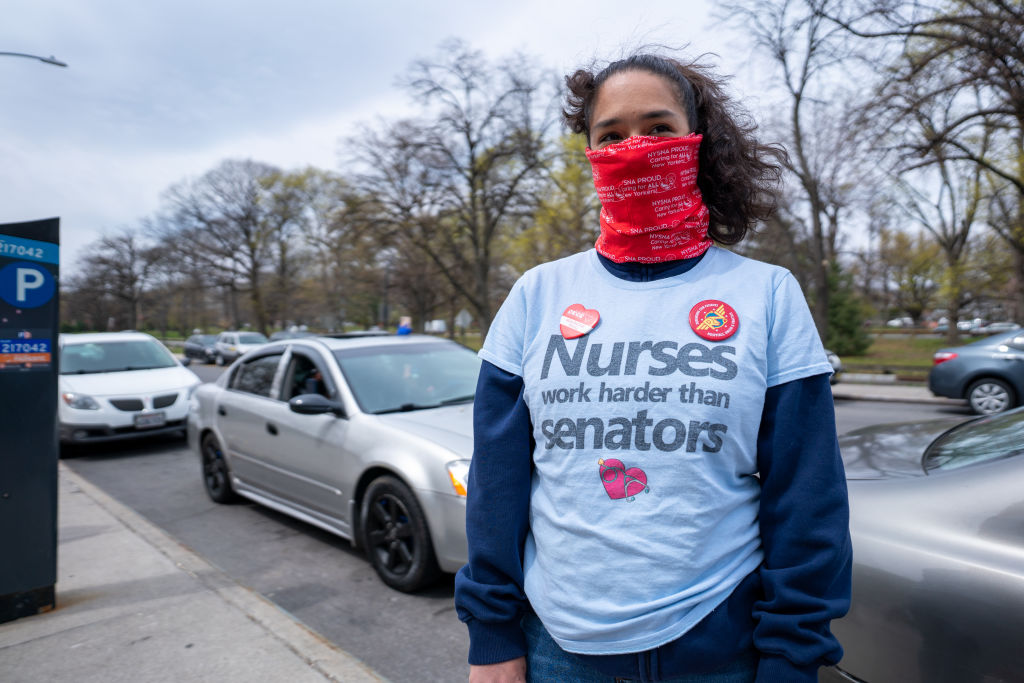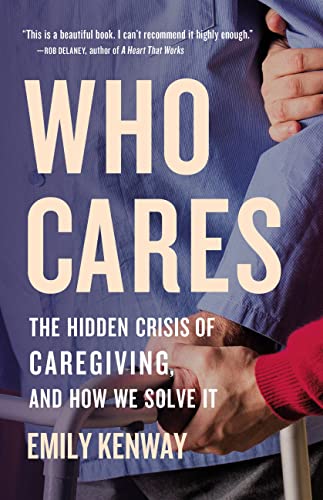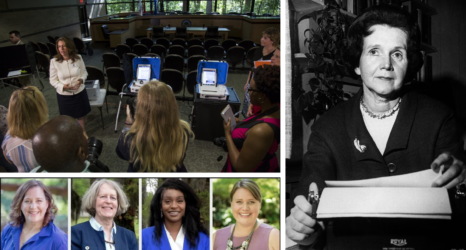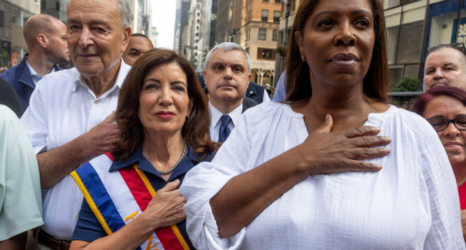While some women want freedom from care, other women need the freedom to care.

The idea that women shouldn’t be obligated to perform unpaid domestic labor, including care, is central to feminist campaigning. We want to determine the course of our own lives, to follow our passions and ambitions, just like men.
But not all women have had the experience of being relegated to the home and barred from participating in the workforce. Working class women and women of color have had no choice but to work, either because of impoverishment or enslavement. So while some women want freedom from care, other women need the freedom to care.
In my latest book, Who Cares: The Hidden Crisis of Caregiving and How We Solve it, excerpted below, I sought to trace these two very different experience. Through them, I chart an approach to care which has the principles of anti-racism and justice at its core—that is to say, a future of care fit for 21st-century feminism.
The following is an excerpt from Chapter 2, “On Women: Maidens and Migrants.”

If I had to choose only one word to describe my mother, it would be feminist. She was a woman who took no prisoners and had no need of a man to shape her life. She taught my sister and I, both implicitly and explicitly, that our lives were ours, not to be defined by gendered roles.
There was no question of some careers being off limits because of our femininity; life was there to be shaped by our choosing. It was a shock, then, to find myself in my early 30s suddenly required to step off a careerist path and into the classic story line of women’s history: care.
You see, it’s not a coincidence that I’m a woman and I’m writing a book about caregiving. Today, for all our advances, women are still the primary caregivers of sick, elderly and impaired people around the world.
In my family, it was less obvious than in others because I have no father present and my sibling is a sister, so there were no men to shirk care within our direct family unit. Thankfully, I also had helpful uncles. But if this book succeeds at giving you new lenses through which to view the world, ones that foreground caregiving in your perspective, you’ll start to experience a drip feed of disappointment as you realize that the caregivers around you are almost all women.
Try asking at a party or after-work drinks who has a sick or impaired family member, and who it is that cares for them. The answer will be: wives, mothers, sisters and aunts. You won’t be popular, but you’ll be disabused of the idea that we’ve achieved gender equality. Often this will come with a rationale about why it’s the women in their family rather than the men—his location, the nature of his work, that he’s not very good at “that sort of thing.” I’m sure all those things are often true, and I’m also sure that for every specific reason given for a man not performing familial care, there’s a woman who never even got to put her reasons forward. There is a kind of collective gullibility taking place whereby we’ve all decided to believe in these “reasons” as facts instead of choices. It’s exactly the kind of world that the feminists of my mother’s generation thought they were ending.
The caregivers around you are almost all women. … Often this will come with a rationale about why it’s the women in their family rather than the men—his location, the nature of his work, that he’s not very good at ‘that sort of thing.’
But as much as I may want to rail against the gender inequality of care, I’m also acutely conscious that the story of care is not one in which all women have the same experience.
There are two types of women when it comes to care. The category into which a woman falls determines whether she needs to fight to be freed from family caregiving obligations or, alternatively, fight to care for her kin at all.
This was made very real to me during one of my mother’s many stints in the hospital. I can’t remember when it was—as any long-term caregiver will tell you, after a while, the rollercoaster of emergencies, therapies, appointments and hopes all blur into one. But at some point she spent a long time in a hematology ward. Much to her dismay, she didn’t have a private room this time. When I didn’t need to be at my office, I’d sit by her bed working on my laptop, occasionally taking the interminably slow elevator down to the ground-floor shop to get her a newspaper or a drink.
I came to recognize the patients in the other beds, by their faces for those well enough to be walking around, drip machines trundling along beside them, and by the tenor of the cries of pain or frustration for those who were sicker, hidden behind curtains or turned on their sides toward the walls. Some patients had lots of visitors; some had none. One young woman was visited most days by an older woman who wore a tunic similar to hospital scrubs over plain black trousers. She had an exhausted, harried manner. A backpack was slung over her shoulder and often half unzipped as if she’d left somewhere in a rush. She’d sit beside the younger woman’s bed, a few feet away from me, speaking inaudibly with her, then leave barely 15 minutes later.
One day, my mum wanted some Lucozade, so I happened to be waiting for that interminably slow elevator at the same time as the harried woman. In London, it’s conventional to ignore strangers, even if you’re standing a foot away from them waiting for an elevator. But in the parallel universe of the hospital, different rules apply, especially when you’ve seen someone for long enough to know they’re on a similar shitty journey to you. She told me that the young woman was her daughter, a sufferer of sickle cell anemia.
“I come between shifts,” she said, “when I can.”
I thought from her attire she was probably a care worker, so I asked and I was right. The elevator came and I looked at our reflections in its mirror as we descended slowly through the hospital. We were the living embodiment of the story of women and care as it manifests in the 21st century.
There was me, a white “knowledge worker,” middle-class, able to be with my mother a lot, even if the juggle was a strain.
And there was this lady beside me, leaning wearily against the handrail, a Black woman doing poorly paid shift work over which she likely had little to no control, taking care of someone else’s family members while her own daughter suffered in the hospital.
We shared the sadness of watching a loved one in anguish, but our caregiving experience was completely different.
Too often, narratives about care focus on one or the other of these experiences. We need to witness both care worlds to create solutions that work for all women, not just some.
Up next:
U.S. democracy is at a dangerous inflection point—from the demise of abortion rights, to a lack of pay equity and parental leave, to skyrocketing maternal mortality, and attacks on trans health. Left unchecked, these crises will lead to wider gaps in political participation and representation. For 50 years, Ms. has been forging feminist journalism—reporting, rebelling and truth-telling from the front-lines, championing the Equal Rights Amendment, and centering the stories of those most impacted. With all that’s at stake for equality, we are redoubling our commitment for the next 50 years. In turn, we need your help, Support Ms. today with a donation—any amount that is meaningful to you. For as little as $5 each month, you’ll receive the print magazine along with our e-newsletters, action alerts, and invitations to Ms. Studios events and podcasts. We are grateful for your loyalty and ferocity.





